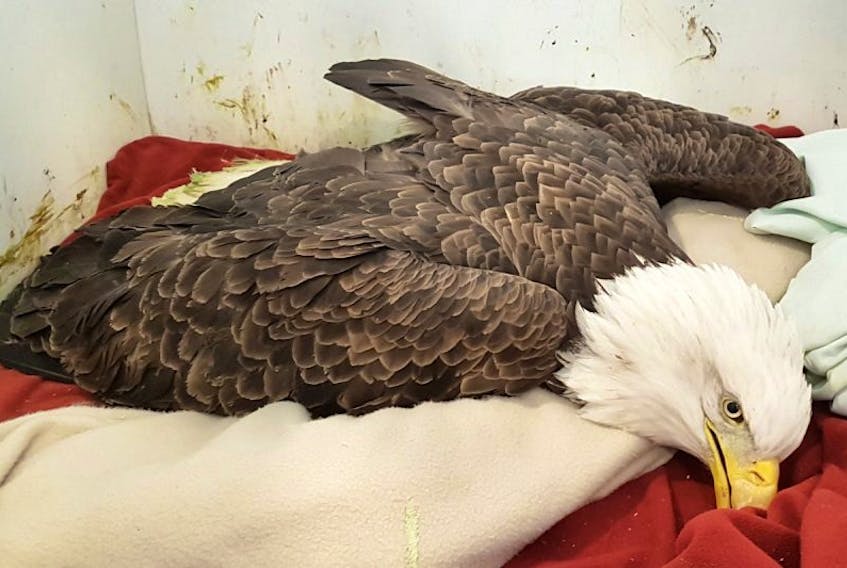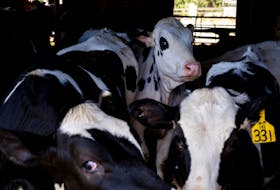“I was running errands like everyone else on Christmas Eve when my phone rang and I saw it was DNR in Sydney and thought, ‘Oh no!’” said Dr. Helene Van Doninck, the veterinarian who runs the centre.
That was around 11 a.m. and six hours later the eagle was in Colchester County, thanks to a DNR officer who drove her from Sydney to the causeway and a volunteer who brought her the rest of the way.
Tests at the clinic found the eagle to have higher lead levels than the machine is able to read. She was given fluids, heat and an injectable drug to bind the lead and help her excrete it but she couldn’t be saved.
“I was running errands like everyone else on Christmas Eve when my phone rang and I saw it was DNR in Sydney and thought, ‘Oh no!’” said Dr. Helene Van Doninck, the veterinarian who runs the centre.
That was around 11 a.m. and six hours later the eagle was in Colchester County, thanks to a DNR officer who drove her from Sydney to the causeway and a volunteer who brought her the rest of the way.
Tests at the clinic found the eagle to have higher lead levels than the machine is able to read. She was given fluids, heat and an injectable drug to bind the lead and help her excrete it but she couldn’t be saved.
“Her mate was with her when she was picked up and they probably ate the same stuff so I’ve asked people down there to keep their eyes open,” said Van Doninck. “I feel horrible about this but I’m actively doing stuff and I’ve personally placed non-lead ammunition and tackle in the hands of people. People need to understand why they shouldn’t use lead. When they do they’re poisoning themselves and their families too.”
Eagles, and other animals, are often poisoned by lead fragments left in gut piles and carcasses or by lead tackle found on the bottom of waterways. Humans sometimes also ingest lead, as fragments scatter up to 45 centimetres (18 inches) when an animal is shot.
Non-lead bullets remain intact, offer a quicker kill and don’t post a deadly threat to wildlife. Van Doninck will provide hunters and anglers with non-lead gear in exchange for lead.
Fast facts
– One standard 150 grain lead bullet contains enough lead to kill 10 eagles.
– A typical lead bullet fragments into hundreds of pieces upon impact.
– Copper bullets mushroom upon impact, allowing the entire bullet to be easily removed.









